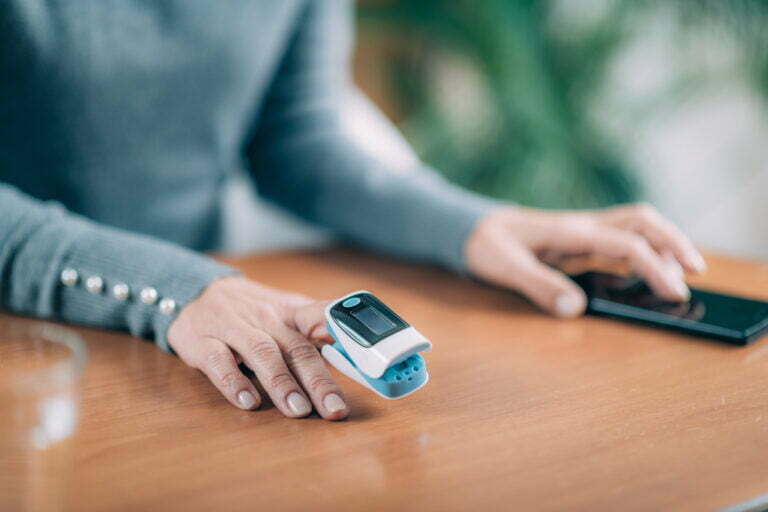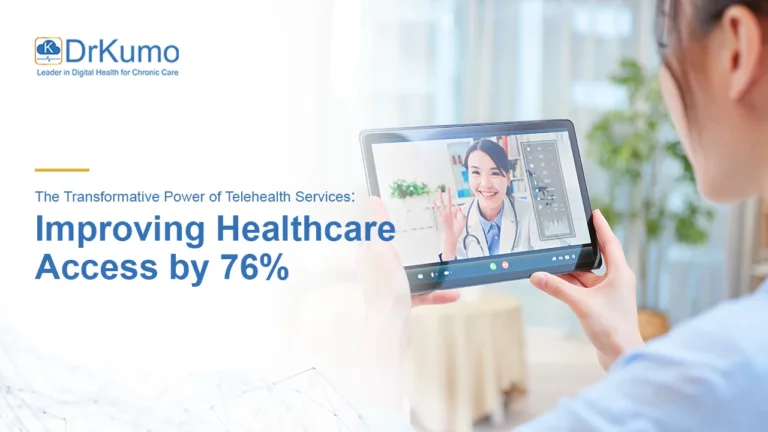Remote Patient Monitoring (RPM) has become an essential component of modern healthcare, especially for managing chronic conditions. Medicare, recognizing the benefits of Remote Monitoring, has established specific eligibility criteria for both patients and providers.
This comprehensive guide will delve into the RPM Medicare eligibility criteria, ensuring healthcare providers can maximize their service offerings and patients can benefit from continuous health monitoring.
Understanding RPM and Its Importance
Before diving into the eligibility criteria, it’s important to understand what Medicare RPM entails and why it is crucial in today’s healthcare landscape. RPM uses technology to collect medical and health data from patients in one location and electronically transmit this information securely to healthcare providers in a different location.
The data can include vital signs, weight, blood pressure, blood sugar levels, and other significant health metrics. This continuous monitoring enables proactive healthcare management, leading to better health outcomes and reduced hospital readmissions.
Eligibility Criteria for Patients
Medicare has outlined clear guidelines to determine which patients qualify for RPM services. Here are the key criteria:
- Chronic Condition Diagnosis
- Primary Criterion: Patients must have a diagnosed chronic condition that can be effectively managed through remote monitoring. Common conditions include diabetes, heart failure, chronic obstructive pulmonary disease (COPD), and hypertension.
- Medical Necessity: The use of RPM services must be deemed medically necessary by the treating physician. This means that remote monitoring should provide a significant advantage over traditional in-office visits for managing the patient’s specific condition.
- Established Patient-Physician Relationship
- An established relationship between the patient and the physician is essential. This criterion ensures continuity of care and allows providers to interpret patient data effectively within the context of their medical history.
- Patient’s Capability and Willingness
- Patients must be willing and able to participate in the RPM program. This involves using the provided monitoring devices, understanding and interpreting data, and communicating effectively with their healthcare provider.
- Access to Technology: Patients need access to the necessary technology, such as a smartphone or tablet, to use the RPM platform and communicate with their provider.
- Minimum Data Collection Requirements
- Medicare requires that data be collected and transmitted for at least 16 days out of a 30-day period to qualify for reimbursement. This ensures sufficient data is available to assess patient progress and make informed treatment decisions.
Additional Considerations
While the above criteria form the foundation for patient eligibility, several additional factors can influence patient selection:
- Social Determinants of Health (SDOH): Factors like housing stability, food security, and access to transportation can significantly impact a patient’s ability to benefit from RPM. Considering SDOH during patient selection helps identify patients who may require additional support to participate effectively in the program.
- Patient Education and Engagement: Patients need to be educated about the benefits of RPM and how to use the technology effectively. Engagement strategies can include training sessions, user-friendly instructions, and ongoing support.
Eligibility Criteria for Providers
Healthcare providers also need to meet specific criteria to offer RPM services under Medicare. Here are the essential requirements:
1. Medicare Enrollment
Providers must be enrolled in Medicare to offer RPM services. This includes physicians, nurse practitioners, and physician assistants who are authorized to bill Medicare for their services.
2. Compliance with CPT Codes
- Providers must use specific Current Procedural Terminology (CPT) codes to bill for RPM services. The relevant codes include:
- CPT 99453: Covers initial setup and patient education on the use of monitoring equipment.
- CPT 99454: Covers the supply of devices and daily recordings or programmed alerts transmission for a 30-day period.
- CPT 99457: Covers remote monitoring and management services, including at least 20 minutes of interactive communication with the patient per month.
- CPT 99458: An add-on code for each additional 20 minutes of interactive communication with the patient per month.
- HCPCS Code G0511: Used by Federally Qualified Health Centers (FQHCs) for chronic care management services that include RPM.
3. Documentation and Data Security
Detailed documentation of RPM services is crucial for successful reimbursement. This includes notes on patient interactions, data analysis, and adjustments made to the treatment plan based on remote monitoring data.
Providers must ensure robust data security measures to comply with HIPAA regulations. This includes secure data transmission protocols, encryption of patient information, and staff training on data privacy practices.
4. Technical Infrastructure
Providers need a reliable technical infrastructure to support RPM services. This includes a HIPAA-compliant platform for data collection and transmission, compatible monitoring devices, and technical support for both patients and providers.
Implementing RPM Medicare: Best Practices
Successful implementation of RPM services requires adherence to Medicare guidelines and best practices to maximize patient outcomes and reimbursement. Here are some best practices for healthcare providers:
Patient-Centered Approach
Focus on patient education and engagement. Provide clear instructions on how to use monitoring devices, interpret data, and communicate effectively with healthcare providers. Address any technology access barriers to ensure patients can participate fully in the RPM program.
Tailored Communication
Use RPM data to tailor communication strategies to address specific patient needs and concerns. This can involve targeted educational resources, proactive intervention based on data fluctuations, and timely adjustments to treatment plans.
Care Coordination
Foster effective care coordination among different healthcare providers involved in a patient’s care plan. Share RPM data securely with specialists, nurses, and social workers to ensure a collaborative approach to patient care.
Monitoring and Evaluation
Continuously monitor patient data and evaluate the effectiveness of RPM services. Use data analytics to identify trends, measure outcomes, and make informed decisions about patient care.
Compliance and Reimbursement
Stay updated on CMS guidelines and reimbursement policies. Ensure accurate documentation and coding to maximize reimbursement for RPM services.
Challenges and Solutions
While RPM offers numerous benefits, providers may face challenges during implementation. Here are some common challenges and potential solutions:
Technical Issues and Device Reliability
Establish a dedicated technical support team to assist patients with device-related issues. Perform regular maintenance and updates to ensure device reliability.
Patient and Provider Adoption
Conduct comprehensive training sessions and provide continuous support to ensure smooth adoption of RPM technology. Share patient testimonials and success stories to motivate others.
Data Security and Privacy Concerns
Implement robust data security measures to protect patient information. Ensure compliance with HIPAA regulations through secure data transmission and encryption protocols.
The Future of RPM Medicare
The future of RPM Medicare looks promising, with ongoing advancements in technology and healthcare delivery. Emerging trends include the integration of artificial intelligence (AI) and machine learning to enhance predictive analytics and personalized care. Additionally, the combination of RPM and telehealth services is expected to further improve patient outcomes and accessibility to healthcare.
How DrKumo Enhances RPM Medicare Implementation
As we’ve explored the essential criteria for patient and provider eligibility under RPM Medicare, it’s clear that implementing a robust RPM system can significantly enhance chronic disease management and patient outcomes.
DrKumo stands at the forefront of this healthcare revolution, offering cutting-edge RPM solutions that align perfectly with Medicare’s guidelines. With DrKumo’s comprehensive and user-friendly platform, healthcare providers can seamlessly integrate RPM services into their practice, ensuring compliance with CMS requirements while maximizing the benefits for their patients.
DrKumo’s technology, including advanced sensor-fusion devices and a HIPAA-compliant cloud platform, empowers providers with real-time patient data and actionable insights. This enables proactive healthcare management, reduces hospital readmissions, and improves overall patient satisfaction.
Takeaways
Understanding the eligibility criteria for patients and providers under RPM Medicare is crucial for the successful implementation of remote patient monitoring services. By adhering to CMS guidelines, healthcare providers can optimize patient care, improve clinical outcomes, and maximize reimbursement for their services.
As the healthcare landscape continues to evolve, RPM technology will play an increasingly important role in chronic disease management, empowering patients and enhancing the quality of care.
For more information on implementing RPM services and maximizing their benefits, visit DrKumo’s comprehensive resources.
Disclaimer: This blog is for informational purposes only and does not constitute medical, legal, or financial advice. Consult a qualified professional before implementing any health management technology or program. CMS guidelines for RPM services are subject to change, so verify current regulations with appropriate authorities. DrKumo is not responsible for any errors or outcomes resulting from using this information.








